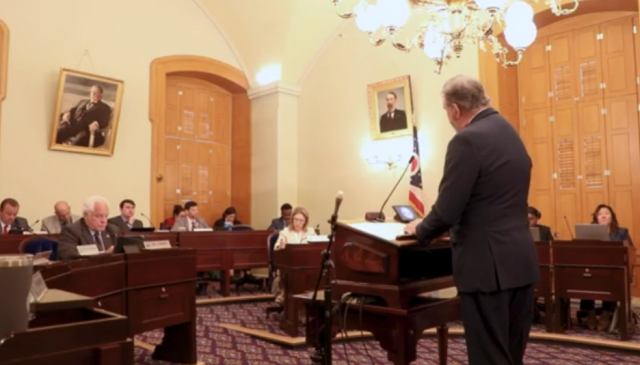
COLUMBUS, OH – Ohio Attorney General Dave Yost is urging state lawmakers to adopt nitrogen hypoxia as a new method of execution, arguing that Ohio’s death penalty system has become “a dishonorable abdication of responsibility” due to its years-long standstill.
Testifying before the House Judiciary Committee, Yost said that adding nitrogen hypoxia — an execution method that causes death through oxygen deprivation using an inert gas — would allow Ohio to enforce capital punishment sentences after years of delay.
“An additional method of execution is necessary,” Yost told lawmakers, speaking in support of House Bill 36, which would authorize nitrogen hypoxia for executions in the state.
Currently, lethal injection is the only approved method under Ohio law. However, Yost said that method has been effectively halted because private drug manufacturers refuse to sell execution drugs to the state, citing moral and legal concerns.
“Private drug companies are defying Ohio’s laws and vetoing public policy by refusing to provide execution drugs,” Yost said.
Ohio has not carried out an execution since July 2018, and the Attorney General noted that the indefinite pause has left victims’ families and jurors without closure.
A Call for Legislative Action
Yost emphasized that both the families of murder victims and Ohioans who served on capital juries are waiting for the state to fulfill its legal responsibilities. He called the lack of action a failure of leadership and urged legislators to act swiftly.
“We owe it to the victims’ families and to the integrity of our justice system to carry out the sentences lawfully imposed,” he said.
Currently, nine U.S. states authorize lethal gas as a form of execution, and five of those — Alabama, Arkansas, Louisiana, Mississippi, and Oklahoma — specify nitrogen hypoxia. Alabama conducted the nation’s first nitrogen hypoxia execution in early 2024, reigniting national debate over execution protocols.
Federal Context
Earlier this year, former President Donald Trump directed U.S. Attorney General Pam Bondi to ensure states with the death penalty have access to lethal injection drugs. Yost responded favorably in a March 5 letter, noting that without federal assistance, “Ohio’s situation is unlikely to change.”
Ohio’s Capital Punishment by the Numbers
According to the Ohio Attorney General’s 2024 Capital Punishment Annual Report:
- Ohio’s last execution took place in July 2018.
- The average time an inmate spends on death row exceeds 22 years.
- From 1981 to 2024, 337 people received a combined 342 death sentences — yet only 56 have been carried out, or roughly one in six.
Ohio currently has 118 inmates on death row.
Yost concluded that without a new method of execution, Ohio’s death penalty remains an empty law — one that neither deters crime nor provides justice to victims.











